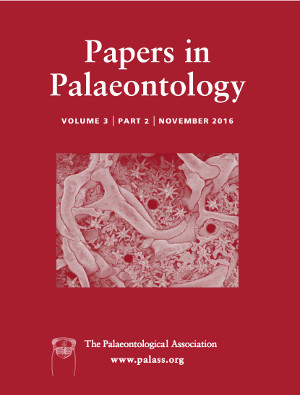Reg. Charity No. 1168330

Diagnostic characters of the recently established new genus of radiolitid rudist Auroradiolites include an entirely compact outer shell layer, a distinctly convex upper (left) valve and a robust myocardinal apparatus surrounding a strongly internally projected ligamentary infolding. Until now, A. biconvexus (previously considered to be exclusively late Albian in age) has been reported only from the Langshan Formation, which crops out along the northern portion of the Lhasa block, Tibet. Here, it is recorded for the first time from the Sangzugang Formation of the Xigaze Forearc Basin, situated on the southern margin of the Lhasa block. A. biconvexus differs from the south‐west Asian type species A. gilgitensis (late Aptian to Albian) by its relatively larger size, more strongly domed left valve and distinct radial undulations of the outer shell layer. The characters of A. gilgitensis are further clarified from archived material from central Afghanistan, also newly identified and described herein. All Auroradiolites records to date are revised. The recognition of examples of A. biconvexus from upper Aptian strata increases both the stratigraphical and geographical ranges of the species, indicating that it had already branched off from A. gilgitensis in the late Aptian. Some new radiolitid specimens that combine both compact and cellular calcitic outer shell layer structures are also described from the Langshan Formation, but a number of internal differences from Auroradiolites cast doubt on their constituting a sister group to the latter and we assign them to Eoradiolites cf. hedini. Rather, the evolution of Auroradiolites directly from the ancestral radiolitid genus Agriopleura is favoured on the grounds of parsimony. So far, the genus Auroradiolites has been recorded from Iran, central and eastern Afghanistan, the type locality of Yasin in north‐western Pakistan, southern and northern Ladakh, the Lhasa block, as well as Hokkaido in northern Japan. During the late Aptian to Albian interval, all of these localities were associated with terranes and blocks that were limited to the north‐eastern margin of Tethys and the western Pacific margin, making Auroradiolites an indicator of a SW Asian to Pacific faunal province.